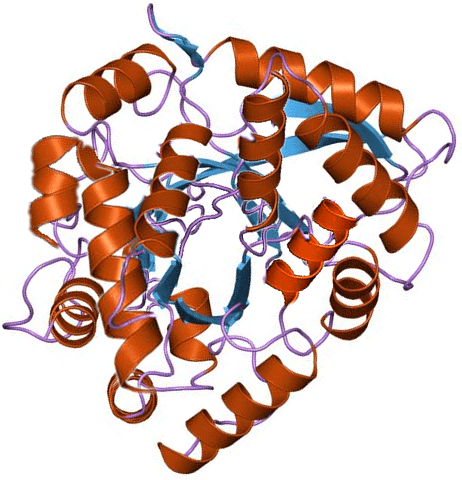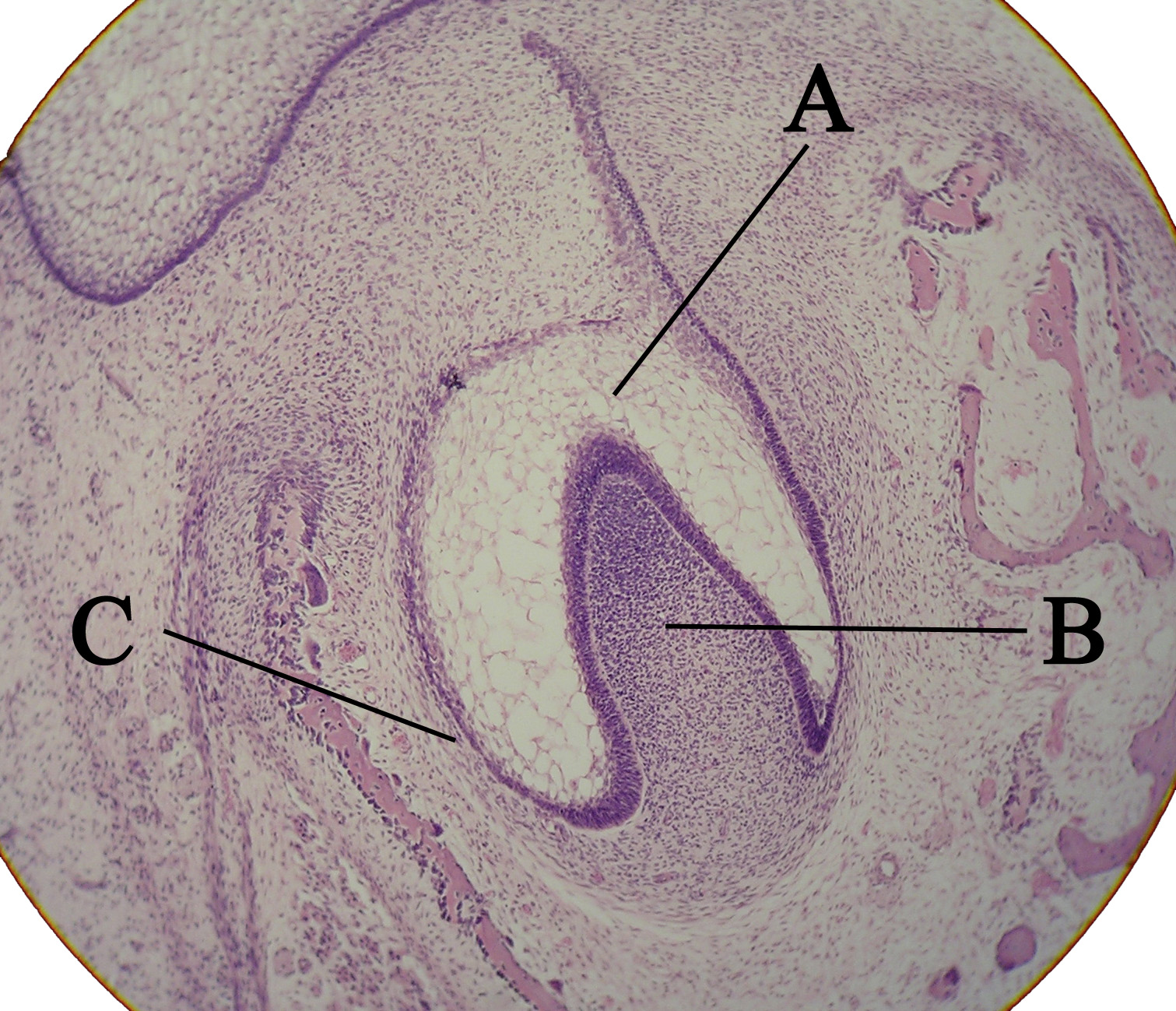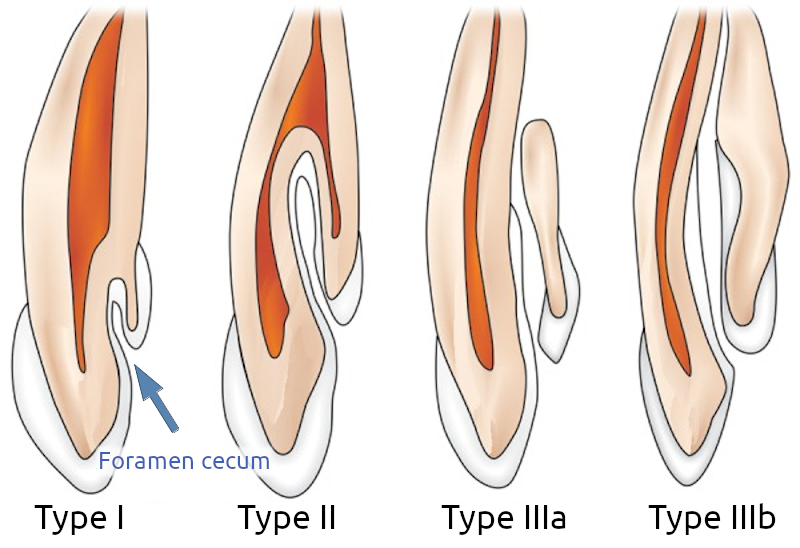|
Enamel Organ
The enamel organ, also known as the dental organ, is a cellular aggregation seen in a developing tooth and it lies above the dental papilla. The enamel organ which is differentiated from the primitive oral epithelium lining the stomodeum.The enamel organ is responsible for the formation of enamel, initiation of dentine formation, establishment of the shape of a tooth's crown, and establishment of the dentoenamel junction. The enamel organ has four layers; the inner enamel epithelium, outer enamel epithelium, stratum intermedium, and the stellate reticulum. The dental papilla, the differentiated ectomesenchyme deep to the enamel organ, will produce dentin and the dental pulp. The surrounding ectomesenchyme tissue, the dental follicle, is the primitive cementum, periodontal ligament and alveolar bone beneath the tooth root. The site where the internal enamel epithelium and external enamel epithelium coalesce is the cervical root, important in proliferation of the dental root. Toot ... [...More Info...] [...Related Items...] OR: [Wikipedia] [Google] [Baidu] |
Tooth Development
Tooth development or odontogenesis is the complex process by which teeth form from embryonic cells, grow, and erupt into the mouth. For human teeth to have a healthy oral environment, all parts of the tooth must develop during appropriate stages of fetal development. Primary (baby) teeth start to form between the sixth and eighth week of prenatal development, and permanent teeth begin to form in the twentieth week.Ten Cate's Oral Histology, Nanci, Elsevier, 2013, pages 70-94 If teeth do not start to develop at or near these times, they will not develop at all, resulting in hypodontia or anodontia. A significant amount of research has focused on determining the processes that initiate tooth development. It is widely accepted that there is a factor within the tissues of the first pharyngeal arch that is necessary for the development of teeth. Overview The tooth germ is an aggregation of cells that eventually forms a tooth.University of Texas Medical Branch. These cells are de ... [...More Info...] [...Related Items...] OR: [Wikipedia] [Google] [Baidu] |
Cementum
Cementum is a specialized calcified substance covering the root of a tooth. The cementum is the part of the periodontium that attaches the teeth to the alveolar bone by anchoring the periodontal ligament.Illustrated Dental Embryology, Histology, and Anatomy, Bath-Balogh and Fehrenbach, Elsevier, 2011, page 170. Structure The cells of cementum are the entrapped cementoblasts, the cementocytes. Each cementocyte lies in its lacuna, similar to the pattern noted in bone. These lacunae also have canaliculi or canals. Unlike those in bone, however, these canals in cementum do not contain nerves, nor do they radiate outward. Instead, the canals are oriented toward the periodontal ligament and contain cementocytic processes that exist to diffuse nutrients from the ligament because it is vascularized. After the apposition of cementum in layers, the cementoblasts that do not become entrapped in cementum line up along the cemental surface along the length of the outer covering of the perio ... [...More Info...] [...Related Items...] OR: [Wikipedia] [Google] [Baidu] |
Tooth
A tooth ( : teeth) is a hard, calcified structure found in the jaws (or mouths) of many vertebrates and used to break down food. Some animals, particularly carnivores and omnivores, also use teeth to help with capturing or wounding prey, tearing food, for defensive purposes, to intimidate other animals often including their own, or to carry prey or their young. The roots of teeth are covered by gums. Teeth are not made of bone, but rather of multiple tissues of varying density and hardness that originate from the embryonic germ layer, the ectoderm. The general structure of teeth is similar across the vertebrates, although there is considerable variation in their form and position. The teeth of mammals have deep roots, and this pattern is also found in some fish, and in crocodilians. In most teleost fish, however, the teeth are attached to the outer surface of the bone, while in lizards they are attached to the inner surface of the jaw by one side. In cartilaginous fish, s ... [...More Info...] [...Related Items...] OR: [Wikipedia] [Google] [Baidu] |
Ameloblast
Ameloblasts are cells present only during tooth development that deposit tooth enamel, which is the hard outermost layer of the tooth forming the surface of the crown. Structure Each ameloblast is a columnar cell approximately 4 micrometers in diameter, 40 micrometers in length and is hexagonal in cross section. The secretory end of the ameloblast ends in a six-sided pyramid-like projection known as the Tomes' process. The angulation of the Tomes' process is significant in the orientation of enamel rods, the basic unit of tooth enamel. Distal terminal bars are junctional complexes that separate the Tomes' processes from ameloblast proper. Development Ameloblasts are derived from oral epithelium tissue of ectodermal origin. Their differentiation from preameloblasts (whose origin is from inner enamel epithelium) is a result of signaling from the ectomesenchymal cells of the dental papilla. Initially the preameloblasts will differentiate into presecretory ameloblasts and then into s ... [...More Info...] [...Related Items...] OR: [Wikipedia] [Google] [Baidu] |
Amelogenesis
Amelogenesis is the formation of enamel on teeth and begins when the crown is forming during the advanced bell stage of tooth development after dentinogenesis forms a first layer of dentin. Dentin must be present for enamel to be formed. Ameloblasts must also be present for dentinogenesis to continue. A message is sent from the newly differentiated odontoblasts to the inner enamel epithelium (IEE) that causes epithelial cells to further differentiate into active secretory ameloblasts. Dentinogenesis is in turn dependent on signals from the differentiating IEE in order for the process to continue. This prerequisite is an example of the biological concept known as ''reciprocal induction'', in this instance between mesenchymal and epithelial cells. Stages Amelogenesis is considered to have three stages. The first stage is known as the inductive stage, the second is the secretory stage, and the third stage is known as the maturation stage. During the inductive stage, ameloblast di ... [...More Info...] [...Related Items...] OR: [Wikipedia] [Google] [Baidu] |
Gliadin
Gliadin (a type of prolamin) is a class of proteins present in wheat and several other cereals within the grass genus ''Triticum''. Gliadins, which are a component of gluten, are essential for giving bread the ability to rise properly during baking. Gliadins and glutenins are the two main components of the gluten fraction of the wheat seed. This gluten is found in products such as wheat flour. Gluten is split about evenly between the gliadins and glutenins, although there are variations found in different sources. Both gliadins and glutenins are not water-soluble, but gliadins are soluble in 70% aqueous ethanol. There are three main types of gliadin (α, γ, and ω), to which the body is intolerant in coeliac (or celiac) disease. Diagnosis of this disease has recently been improving. Gliadin can cross the intestinal epithelium. Breast milk of healthy human mothers who eat gluten-containing foods presents high levels of non-degraded gliadin. Types The α, γ, and ω gliadin t ... [...More Info...] [...Related Items...] OR: [Wikipedia] [Google] [Baidu] |
Amelogenin
Amelogenins are a group of protein isoforms produced by alternative splicing or proteolysis from the ''AMELX'' gene, on the X chromosome, and also the ''AMELY'' gene in males, on the Y chromosome. They are involved in amelogenesis, the development of enamel. Amelogenins are type of extracellular matrix protein, which, together with ameloblastins, enamelins and tuftelins, direct the mineralization of enamel to form a highly organized matrix of rods, interrod crystal and proteins. Although the precise role of amelogenin(s) in regulating the mineralization process is unknown, it is known that amelogenins are abundant during amelogenesis. Developing human enamel contains about 70% protein, 90% of which are amelogenins. Function Amelogenins are believed to be involved in the organizing of enamel rods during tooth development. The latest research indicates that these proteins regulate the initiation and growth of hydroxyapatite crystals during the mineralization of enamel. In add ... [...More Info...] [...Related Items...] OR: [Wikipedia] [Google] [Baidu] |
Coeliac Disease
Coeliac disease (British English) or celiac disease (American English) is a long-term autoimmune disorder, primarily affecting the small intestine, where individuals develop intolerance to gluten, present in foods such as wheat, rye and barley. Classic symptoms include gastrointestinal problems such as chronic diarrhoea, abdominal distention, malabsorption, loss of appetite, and among children failure to grow normally. This often begins between six months and two years of age. Non-classic symptoms are more common, especially in people older than two years. There may be mild or absent gastrointestinal symptoms, a wide number of symptoms involving any part of the body, or no obvious symptoms. Coeliac disease was first described in childhood; however, it may develop at any age. It is associated with other autoimmune diseases, such as Type 1 diabetes mellitus and Hashimoto's thyroiditis, among others. Coeliac disease is caused by a reaction to gluten, a group of various prote ... [...More Info...] [...Related Items...] OR: [Wikipedia] [Google] [Baidu] |
Pulpitis
Pulpitis is inflammation of dental pulp tissue. The pulp contains the blood vessels, the nerves, and connective tissue inside a tooth and provides the tooth’s blood and nutrients. Pulpitis is mainly caused by bacterial infection which itself is a secondary development of caries (tooth decay). It manifests itself in the form of a toothache. Signs and symptoms Increased sensitivity to stimuli, specifically hot and cold, is a common symptom of pulpitis. A prolonged throbbing pain may be associated with the disease. However, pulpitis can also occur without any pain. Reversible pulpitis is characterised by intermittent, brief discomfort initiated by a hot, cold or sweet stimulus. The pain evoked is of short duration and there is no lingering or spontaneous pain. The pain ceases within a short period after removal of the stimulus. With a reversible pulpitis, sleep is usually not affected and no analgesics are necessary. Usually, no atypical change is evident on the radiograp ... [...More Info...] [...Related Items...] OR: [Wikipedia] [Google] [Baidu] |
Perikyma
Perikymata (Greek plural of περικύμα, perikyma) are incremental growth lines that appear on the surface of tooth enamel as a series of linear grooves. In anatomically modern humans, each perikyma takes approximately 6–12 days to form. Thus, the count of perikymata may be used to assess how long a tooth crown took to form. They may disappear as the enamel wears over time after the tooth erupts. Perikymata are the expression of striae of Retzius The striae of Retzius are incremental growth lines or bands seen in tooth enamel. They represent the incremental pattern of enamel, the successive apposition of different layers of enamel during crown formation. There are 3 types of incremental ... at the surface of enamel. They can be found on all teeth, but are usually the easiest to notice on anterior teeth (incisors and canines). References {{reflist Parts of tooth ... [...More Info...] [...Related Items...] OR: [Wikipedia] [Google] [Baidu] |
Odontogenesis
Tooth development or odontogenesis is the complex process by which teeth form from embryonic cells, grow, and erupt into the mouth. For human teeth to have a healthy oral environment, all parts of the tooth must develop during appropriate stages of fetal development. Primary (baby) teeth start to form between the sixth and eighth week of prenatal development, and permanent teeth begin to form in the twentieth week.Ten Cate's Oral Histology, Nanci, Elsevier, 2013, pages 70-94 If teeth do not start to develop at or near these times, they will not develop at all, resulting in hypodontia or anodontia. A significant amount of research has focused on determining the processes that initiate tooth development. It is widely accepted that there is a factor within the tissues of the first pharyngeal arch that is necessary for the development of teeth. Overview The tooth germ is an aggregation of cells that eventually forms a tooth.University of Texas Medical Branch. These cells are der ... [...More Info...] [...Related Items...] OR: [Wikipedia] [Google] [Baidu] |
Dens Invaginatus
Dens invaginatus (DI), also known as tooth within a tooth, is a rare dental malformation where there is an infolding of enamel into dentine. The prevalence of condition is 0.3 - 10%, affecting more males than females. The condition is presented in two forms, coronal and radicular, with the coronal form being more common. DI is a malformation of teeth most likely resulting from an infolding of the dental papilla during tooth development or invagination of all layers of the enamel organ in dental papillae. Affected teeth show a deep infolding of enamel and dentine starting from the foramen coecum or even the tip of the cusps and which may extend deep into the root. Teeth most affected are maxillary lateral incisors Incisors (from Latin ''incidere'', "to cut") are the front teeth present in most mammals. They are located in the premaxilla above and on the mandible below. Humans have a total of eight (two on each side, top and bottom). Opossums have 18, wh ... (80%), followed by ... [...More Info...] [...Related Items...] OR: [Wikipedia] [Google] [Baidu] |





